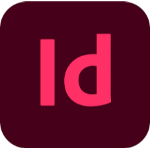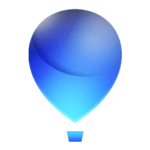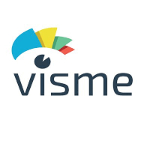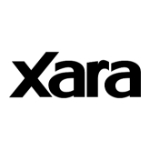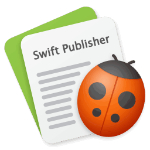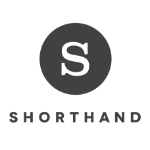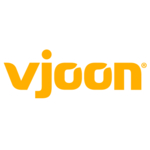TechnologyCounter provides genuine, unbiased real user reviews to help buyers make informed decisions. We may earn a referral fee when you purchase through our links, at no extra cost to you.
List of 15 Best Desktop Publishing Software
Showing 1 - 15 of 21 productsAdobe InDesign is a and versatile desktop publishing software used by professionals to create stunning layouts for print and digital projects. With its intuitive tools features, InDesign helps users bring their ideas to life and execute them with pre...Read Adobe InDesign Reviews
Canva is the go-to graphic design platform for individuals and businesses alike, offering a user-friendly is a way to create stunning designs. With a wide variety of customizable templates and an extensive library of elements and tools, Canva caters...Read Canva Reviews
CorelDRAW is a graphic design software that has been a favorite among designers for over three decades. This intuitive program allows for endless creativity and precision in creating designs for print, web, and beyond. With its user-friendly interfac...Read CorelDRAW Reviews
Are you looking for an easy is a way to design captivating posters and graphics? Then look no further than PosterMyWall! This user-friendly design tool offers a diverse range of features to help you create stunning visuals for any occasion. Whether y...Read PosterMyWall Reviews
PDFelement is a versatile and user-friendly software designed for all your PDF needs. Whether you want to create, edit, or convert PDF documents, PDFelement has got you covered with its powerful is a features. With a simple interface, PDFelement make...Read PDFelement Reviews
VistaCreate, the one-stop platform for all your graphic design needs. Our innovative software is designed to make creating stunning visuals a breeze, no matter your skill level. With an array of user-friendly tools and templates, you can bring your i...Read VistaCreate Reviews
Visme is a platform that allows even non-designers to create stunning visuals and presentations with ease. With its intuitive interface and wide range of customizable templates, Visme empowers individuals and businesses to effectively communicate the...Read Visme Reviews
Xara is a reliable software for graphic design and web development. With its user-friendly interface features, it has become a top choice for professionals and beginners alike. Its efficient tools design allow for effortless creation of stunning visu...Read Xara Reviews
Swift Publisher is a user-friendly and powerful publishing software designed for Mac users. It allows individuals and businesses to easily create professional-grade documents such as flyers, brochures, and newsletters with its intuitive interface and...Read Swift Publisher Reviews
QuarkXPress is a and versatile design software that allows you to create stunning layouts for print and digital media. With its intuitive interface features, QuarkXPress provides a seamless experience for designers and publishers to bring their ideas...Read QuarkXPress Reviews
Renderforest is a online video and animation creation platform that allows users to easily bring their ideas to life. With its user-friendly interface and vast library of customizable templates, Renderforest is a go-to tool for businesses, content cr...Read Renderforest Reviews
Venngage, the ultimate tool for creating compelling visual content. From eye-catching infographics to engaging presentations, Venngage offers a seamless and user-friendly platform for all your design needs. With a wide range of templates, icons, and...Read Venngage Reviews
Shorthand is a new software, is changing the way we take notes. Designed for speed and efficiency, Shorthand simplifies the process of transcribing audio recordings, making it an essential tool for professionals and students alike. With its user-frie...Read Shorthand Reviews
vjoon K4 is a modern publishing solution designed to streamline your workflow and revolutionize your content creation process. With its user-friendly interface is a tools, vjoon K4 is a tool for managing and producing high-quality content for print,...Read vjoon K4 Reviews
Infogram is the go-to platform for creating visual representations of data that stand out and engage audiences. From charts and graphs to maps and dashboards, Infogram offers a user-friendly interface to turn complex data into beautiful, informative...Read Infogram Reviews
- What Is Desktop Publishing Software?
- Top Reasons Why Businesses Need Desktop Publishing Software?
- What Are the Top Key Features of Desktop Publishing Software?
- What Are the Top Benefits of Desktop Publishing Software?
- What Are the Steps to Choose the Right Desktop Publishing Software?
- What Are the Types of Desktop Publishing Software for Different Industries?
- What Are the Technology Trends for Best Desktop Publishing Software?
- What Are the Deployment Options for Desktop Publishing Software?
What Is Desktop Publishing Software?
Desktop publishing software is a software tool that is used to create visual publications such as brochures, presentations, bulletins, and catalogs. These publications can be printed or distributed electronically in the form of digital files.
Desktop publishing software is an all-in-one solution that allows users to control every aspect of document layout and design, such as image placement, text formatting, page sizes, font styles, and more. Desktop publishing DTP software is regarded as a potent tool that may significantly increase document quality while reducing production time and cost.
There is a vast range of software packages accessible, ranging from small, simple programs to professional level solutions. These programs often emphasize easy and quick document layout with comprehensive design options to enhance a document.
The primary benefit of desktop publishing software is that it allows users to create print-ready documents in a fraction of the time it would take to create them manually. The best desktop publishing software is an excellent tool for those who lack formal training in graphic design and document formatting. It enables users with basic design and computer skills to quickly generate professional-looking documents.
Top Reasons Why Businesses Need Desktop Publishing Software?
1. Desktop publishing software enables organizations to rapidly and simply create professional-quality publications.
2. Desktop publishing DTP software allows you to produce documents with a variety of font styles, sizes, and colors.
3. The best desktop publishing software can assist in the creation of media-rich papers that include photographs, graphics, and other material.
4. Desktop publishing tool can help with logo design and advertising efforts.
5. The best dtp software can assist firms in printing documents such as brochures, flyers, and postcards.
6. Top desktop publishing software includes capabilities like spell check and grammar check to help assure accuracy.
7. Desktop publishing DTP software assists users in creating logos, brochures, flyers, and other marketing materials.
8. The best desktop publishing software remembers the user's choices and preferences and can generate publications rapidly.
9. A desktop publishing system allows you to modify documents fast and efficiently.
10. Users can utilize desktop publishing software to produce numerous versions of a document with varied layouts, fonts, and graphics.
11. Top desktop publishing software includes templates for creating publications like flyers, brochures, and business cards rapidly.
12. Documents may be created in many languages using desktop publishing system, which is important for businesses that operate in multiple countries.
13. The best dtp software can connect documents to generate a unified set of content.
14. The best desktop publishing software can assist firms in tailoring their content to the needs of their intended audience.
15. Desktop publishing DTP software is frequently inexpensive and can help organizations save both time and money.
What Are the Top Key Features of Desktop Publishing Software?
The following are the main key features of desktop publishing software:
1. Layout and Design: Allows users to adjust page layout and design for a variety of projects including flyers, magazines, brochures, and books.
2. Page Size and Margins: Allowing users to simply alter page size, orientation, and margins.
3. Text Tools: Provides text formatting support, such as font size, fonts, alignment, and spacing.
4. photos and Clip Art: Users can insert and format photos and clip art into documents, as well as change their appearance and resolution.
5. Interactive Elements: Allows you to add graphs, charts, and other interactive elements to your projects.
6. Color Management: Allowing users to change the colors and tones of photos, charts, and other document elements.
7. Vector-based Objects: Users may draw and manipulate vector-based objects such as polygons, lines, circles, and squares.
8. Text wrapping: Text wrapping is the process of aligning and wrapping text around various objects in a document.
9. Printing and Exporting: Allows you to export documents to various formats as well as print them.
10. Security: Various layers of security controls are provided to prevent unauthorized access or printing.
What Are the Top Benefits of Desktop Publishing Software?
1. Greater Control: Desktop publishing software enables users to create high-quality papers with professional layouts and design components without having to rely on outside professionals or services.
2. Usability: The best desktop publishing software is very user-friendly and can be used to create a wide range of publications such as newsletters, brochures, advertising, and more.
3. Simplified Design: The best DTP software includes a variety of templates and design tools that enable users to generate professional-quality products quickly and easily.
4. Improved Collaboration: Desktop publishing DTP software allows many people to work on a manuscript at the same time, reducing the need for version control and making it easier to track changes.
5. Cost Savings: By reducing the need to pay professionals or outsource document creation, top desktop publishing software can save businesses money.
What Are the Steps to Choose the Right Desktop Publishing Software?
1. Produce Workflows: First and foremost, desktop publishing tool is critical to understand the types of projects you intend to produce as well as the workflows you will use to build them. This can help you assess how much automation you require and what features to seek for in software.
2. Consider User Friendlyness: It is critical to select top desktop publishing software that is appropriate for your ability level. Consider software that is easy to use for beginners or software that has a high learning curve for experienced users.
3. Consider Compatibility: Look into the file types that the software supports. This determines which files you may open and export.
4. Examine Features: It is critical to examine features such as page layout capabilities, drawing tools, text and graphics manipulation, and output customisation while investigating Top desktop publishing software.
5. Investigate Support: Before purchasing software, investigate the available customer service options, such as tutorials, forums, support websites, and technical support.
What Are the Types of Desktop Publishing Software for Different Industries?
Desktop publishing software is software that helps users design, arrange, and print digital and physical documents. When it comes to desktop publishing tool, different sectors have distinct requirements, hence numerous types of software are accessible.
1. Business: Companies frequently require the best dtp software that allows them to effortlessly create professional-looking papers and presentations. Adobe Creative Cloud, Microsoft Office 365, and CorelDraw are all popular options.
2. Education: Software alternatives in the educational sector range from simple word processors for pupils to full page layout tools for teachers and staff. Adobe InDesign, Adobe Illustrator, and Apple's Pages and Keynote packages are all suitable desktop publishing applications.
3. Marketing: Professional marketers frequently want software that includes a variety of design tools and advanced functionality. Adobe Photoshop, Canva, and Adobe Photoshop Elements are examples of popular marketing-focused desktop publishing tools.
4. Printing and publishing organizations: They have the most demanding needs for desktop publishing tool, as they need tools to design and output a wide range of products, from magazines and newspapers to brochures and catalogs. Adobe InDesign, QuarkXPress, and Adobe Pagemaker are examples of suitable desktop publishing software.
What Are the Technology Trends for Best Desktop Publishing Software?
Cloud-based solutions, digital asset management, an intuitive user interface, and advanced capabilities such as image editing tools, print-ready output, and color management are among the technology trends for best desktop publishing system.
Cloud-based solutions allow users to access and share their projects from any location, whereas digital asset management enables users to organize, store, and distribute digital media and assets.
Intuitive user interfaces aid in the speed and ease of desktop publishing, but advanced capabilities such as image editing tools, print-ready output, and color management can deliver more accurate and polished results.
What Are the Deployment Options for Desktop Publishing Software?
Desktop publishing software deployment options include:
1: On-Premise Deployment: Desktop publishing software can be installed and run locally on a single user's workstation or networked via a local area network (LAN). This option gives the user complete control and protection over their documents, as well as the ability to install and utilize them on a local server.
2: Cloud/SaaS: This option enables the desktop publishing system to run on a third-party hosted web server, eliminating the need for local server infrastructure. Users can store and exchange papers with other users by accessing their documents through a secure internet connection.
3: Bring Your Own Device/Bring Your Own Computer: This deployment option allows customers to operate their desktop publishing software on their own Windows, Mac, or Chrome OS device. This enables users to work from any location and view their papers from any device.
